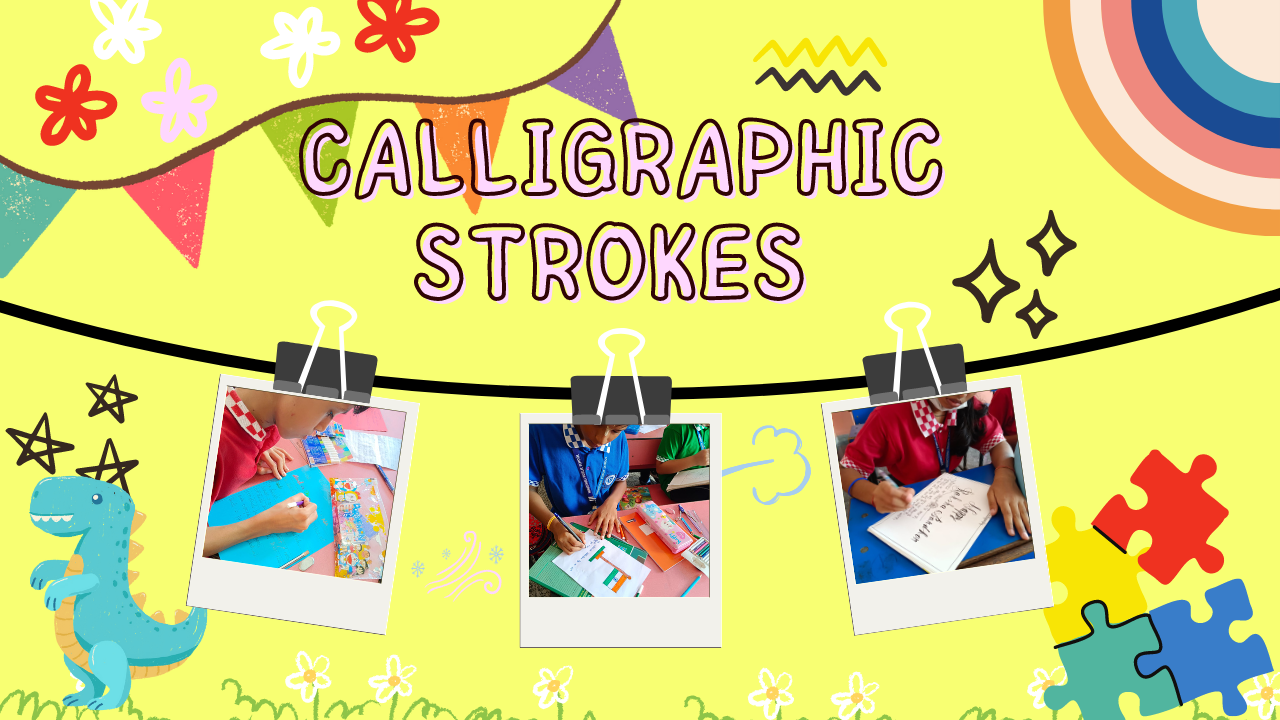Calligraphic Strokes Activity
That’s fantastic to hear that students are participating in a Calligraphic Strokes Activity at school! This activity can be a wonderful way for students to explore their creativity, improve their fine motor skills, and develop an appreciation for the art of calligraphy. Here’s how the activity might unfold:
**1. Introduction:**
– Begin the activity by introducing the students to the art of calligraphy. Share a brief history of calligraphy and its importance in different cultures.
**2. Demonstration:**
– Conduct a live demonstration of basic calligraphic strokes using a projector or large display. Show how to hold the calligraphy pen, apply pressure, and create various strokes.
**3. Hands-on Practice:**
– Distribute calligraphy pens, ink, and paper to the students.
– Start with practicing basic strokes like straight lines, curves, loops, and combinations of these. Encourage students to take their time and focus on precision.
**4. Forming Letters:**
– After mastering basic strokes, guide the students through forming individual letters. Show them how to apply the learned strokes to create elegant letters.
**5. Creating Words:**
– Progress to having students create words and short phrases. Provide assistance and feedback as needed.
**6. Experimentation:**
– Encourage students to experiment with different styles, sizes, and techniques. This is where their creativity can truly shine.
**7. Peer Sharing:**
– Allow students to share their work with their peers. This can boost their confidence and foster a sense of community within the class.
**8. Reflection:**
– Facilitate a discussion where students can reflect on their experience. Ask them what they enjoyed, what challenges they faced, and what they learned.
**9. Showcasing Work:**
– Create a bulletin board or display area in the school where students’ calligraphy works can be showcased. This can inspire others and celebrate their achievements.
**10. Extension Activities:**
– For those who show a keen interest, you could offer more advanced techniques, introduce different calligraphy styles, or explore calligraphy in different languages.
**11. Homework or Follow-Up:**
– Assign optional homework or follow-up tasks, such as practicing certain letters or creating a small calligraphy piece at home.
**12. Continued Practice:**
– Emphasize that calligraphy is a skill that requires practice. Encourage students to continue practicing and refining their skills in their free time.
**13. Celebratory Event:**
– Consider organizing a small event where students can showcase their best calligraphy work to teachers, parents, and other students.
**14. Feedback and Evaluation:**
– Gather feedback from students to understand their thoughts on the activity. Use this feedback to improve and refine the activity for future iterations.
The Calligraphic Strokes Activity can be both educational and enjoyable for students. It’s a chance for them to engage with an ancient art form while also developing valuable skills that can extend to other areas of their education and personal growth.

